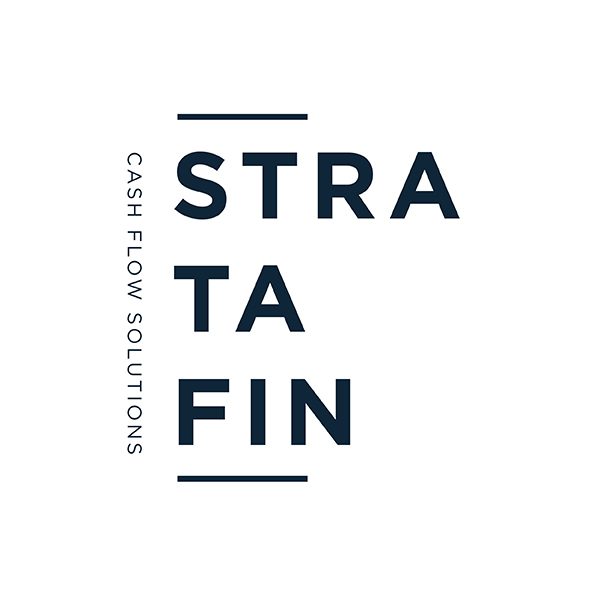Introduction
I have received my fair share of consulting queries about whether HOA traffic fines are legal or if the HOA has the power or authority to include a traffic fine on an owner’s levy statement. Mount Edgecombe Country Club Estate Management Association II (RF) NPC v Singh & others (323/2018) [2019] ZASCA 30 has cleared up this contested and controversial question.
The parties to the case
The appellant, the Mount Edgecombe Country Club Estate Management Association, is an association of homeowners established as a non-profit company.
The first respondent, Mr Niemesh Singh, and the second respondent, Mr Munshurai Madhanlal Ramandh, are residents and property owners (through juristic entities) within the estate.
The facts of the case
The estate comprises 890 freehold and sectional title residential units situated in and around a golf course. The estate consists of extensive common property, including a clubhouse and a conference venue, open areas, dams, ponds and rivulets, as also facilities for various sporting activities, such as squash, bowling, tennis and fishing. It is serviced by a network of roads and pathways for the use of motorised vehicles, pedestrians and golf carts.
In terms of the Association’s Memorandum of Incorporation (MOI), membership of the Association is obligatory for all owners of residential property situated within the Mount Edgecombe Country Club Estate Two (the estate). In accordance with the MOI, the directors of the Association determined that the speed limit on the roads within the estate shall be 40 km/h.
During 2013, the daughter of the first respondent was issued with three contravention notices for exceeding the speed limit with a penalty of R1 500 for each instance. The first two were issued on the same day when she allegedly drove at 69 and 65 km/h respectively. The third was issued on another day when she allegedly drove at 67 km/h. The amounts, which were deemed by the conduct rules to be part of the levy due by the owner, were debited to the first respondent’s account. The first respondent appealed against the first two penalties, but not the third. The appeal succeeded in relation to one of the two contraventions. The first respondent was thus required to pay R3 000 in penalties. The first respondent refused to pay, and the Association consequently deactivated the access cards and biometric access of the first respondent and members of his household.
The two legal questions to be decided on
- Whether the roads within the private housing estate are considered public roads within the meaning of the National Road Traffic Act 93 of 1996?
- Whether conduct rules containing a speed limit of 40 km/hour within the estate are unlawful?
The High Court case
In 2014 the first respondent applied to the High Court, Kwazulu-Natal Local Division, Durban for urgent spoliatory relief. The Judge issued a rule nisi directing the Association “to re-activate the [first respondent’s] access cards and the biometric access of his family.” Whilst finalisation of that application was still pending the respondents launched a challenge to three categories of the Association’s conduct rules, including the ‘road rules’, ‘contractor rules’ and ‘domestic worker rules. The Judge dismissed the application but confirmed the rule nisi issued in the spoliation application.
Appeal to the full court
The respondents appealed to the full court against the dismissal of the application but abandoned the challenge to the contractor rules before the full court. The appeal succeeded in respect of the road and domestic worker rules.
Appeal at the SCA
The Association appealed against the order of the full court insofar as to whether or not rules 7.1.2 and 7.3.2 are unlawful. Those rules provide:
“7.1.2 The speed limit throughout [the estate] is 40 km/h. Any person found driving in excess of 40 km/h, will be subject to a penalty. The presence of children and pedestrians, as well as many undomesticated animals such as buck, monkeys, mongoose, leguans and wild birds, means that drivers need to exercise additional caution when using the roads.
7.3.2 Operating any vehicle in contravention of the National Road Traffic Act within [the estate] is prohibited.”
Are the roads within the estate public roads?
The SCA needed to establish whether the roads within the estate were public roads and subject to the National Road Traffic Act 93 of 1996 (the Act). Section 1 of the Act defines a ‘public road’ as:
“any road, street or thoroughfare or any other place (whether a thoroughfare or not) which is commonly used by the public or any section thereof or to which the public or any section thereof has a right of access . . . .”
The test to be applied in order to determine the nature of a road is whether a section of the public at least commonly uses the area or has a right of access (as opposed to access by invitation direct or implied) thereto.
In applying the test to the present case it was decided the roads within the estate were not public roads. In support of this submission, it was stated that the estate is a private township, and in terms of the township approval, the owner had to construct all the roads in the township to the satisfaction of the local authority. The approval further provided that:
“The owner of the erf, any further subdivision, or any unit thereon shall have a general right of access over Erven 2888-2891 subject to whatever rules, conditions, and restrictions as are laid down from time to time by the “Home Owners’ Association” for the purpose of ensuring proper control and administration of the use and enjoyment thereof.”
The Judge stated that the roads within the estate were therefore private roads from inception. The estate is enclosed by a two-metre high palisade fence, which is topped with electrified security wiring. The ingress and egress within the estate are strictly controlled by gated access controls and security guards. Visitors are required to provide the guards with an access code, while owners use biometric scanning to gain entry to the estate. With the exception of duly authorised guests, there is no right on the part of the general public to traverse the estate’s roads.
The relationship between the Association and owners and third parties
When the respondents chose to purchase property within the estate and become members of the Association, they agreed to be bound by its rules. The relationship between the Association and the respondents is contractual in nature. By voluntary agreement, the owners of property within the estate acknowledge that they and their invitees are only entitled to use the roads laid out within the estate subject to the conduct rules. Any third-party invitee only gains access to the estate with the prior consent of the owner concerned. Upon gaining access to the estate, responsibility for any breach of the conduct rules by the invitee is that of the owner. In that regard clause 21.2 of the MOI provides:
‘In the event of any breach of the conduct rules for residents by any Lessees of Units, guests or invitees, authorised representatives, or any other duly authorised person such breach shall be deemed to have been committed by the Member and the Directors shall be entitled to take such action as they may deem fit against the responsible Member.’
Any breach of the conduct rules is therefore a matter strictly between the owner concerned and the Association. The rules are obviously enforceable only as between the contracting parties, and not against the public at large.
The Association’s right to impose provisions of the National Road Traffic Act 93 of 1996 (the Act)
The full court reasoned that in agreeing, as between members, speed limits, the erection of traffic signs, and the installation of speed humps, the appellant was purporting to usurp the functions reserved exclusively for the authorities under the Act, and that its conduct in so doing was unlawful.
The SCA proclaimed that the Association is not endeavoring to impose the provisions of the Act upon third parties. Neither do the rules purport to exonerate the parties from, or exclude the operation of, the Act.
In terms of the MOI, the directors of the Association are entitled to make rules for the “use and maintenance” of the roads and to “impose a system of penalties” for a breach of such rules. The rules are private in nature, and therefore the Association is not usurping the functions of the recognised authorities or contravening the provisions of the Act. In creating and applying the rules, the Association was not purporting to carry out any functions under the Act.
Rule 7.1.2 does no more than prescribe the maximum speed limit throughout the estate is 40 km/h, and that any person found driving in excess of 40 km/h, will be subject to a penalty. The SCA found that it cannot be said that ordaining a lower speed limit within the estate than that prescribed by national legislation goes beyond promoting, advancing, and protecting the interests of the association’s members or is unreasonable. This is especially so, given the presence of children, pedestrians, and animals upon or in the immediate vicinity of the roads themselves.
Therefore, the mere fact that the rules provide additional contractual requirements for the operation of vehicles on those roads does not mean that the rules themselves have a public law content. Nor does the enforcement of those contractual obligations involve the usurpation of public power. Contractually binding regulations are enforceable by the parties to the contract, and against them only. There is therefore no conflict between the Act and the rules of the Association, agreed to privately.
The Decision
The SCA, therefore, upheld the appeal with costs.
Conclusion
The decision of the SCA case has provided certainty in regard to whether HOAs can impose traffic fines on owners within the estate. It is important to note that in deciding whether the roads within an estate are public or private the circumstances and physical attributes or amenities of the estate will need to be considered. If a section of the public at least commonly uses the area or has a right of access (as opposed to access by invitation direct or implied) thereto, then it could be that the roads within an estate are public in nature. It may be that the estate is not gated or secured by booms or security guards ad is then open to the public.
Furthermore, it is important to note that the MOI of the association will need to:
- Make it mandatory for owners within the estate to be members of the association.
- Give the directors or association the power to make rules that are binding on all members of the association.
- Make rules that reasonably regulate the use of the roads within the estate by promoting, advancing, and protecting the interests of the association’s members.
- Ensure that the rules state that it is the owner that is responsible for the actions of their visitors in regard to the use of the roads within the estate.
- Draft the rules in such a way that the association does not usurp the functions reserved exclusively for the authorities under the National Road Traffic Act 93 of 1996, or endeavor to impose the provisions of the Act upon third parties.
Written by Dr. Carryn Melissa Durham of Stratafin







![Case discussion on SS Glen High v Kruger NO ((2023/055133) [2024] ZAGPJHC 1059 (10 September 2024)](https://b2659803.smushcdn.com/2659803/wp-content/uploads/2024/10/OIP-300x200.jpeg?lossy=1&strip=1&webp=1)




